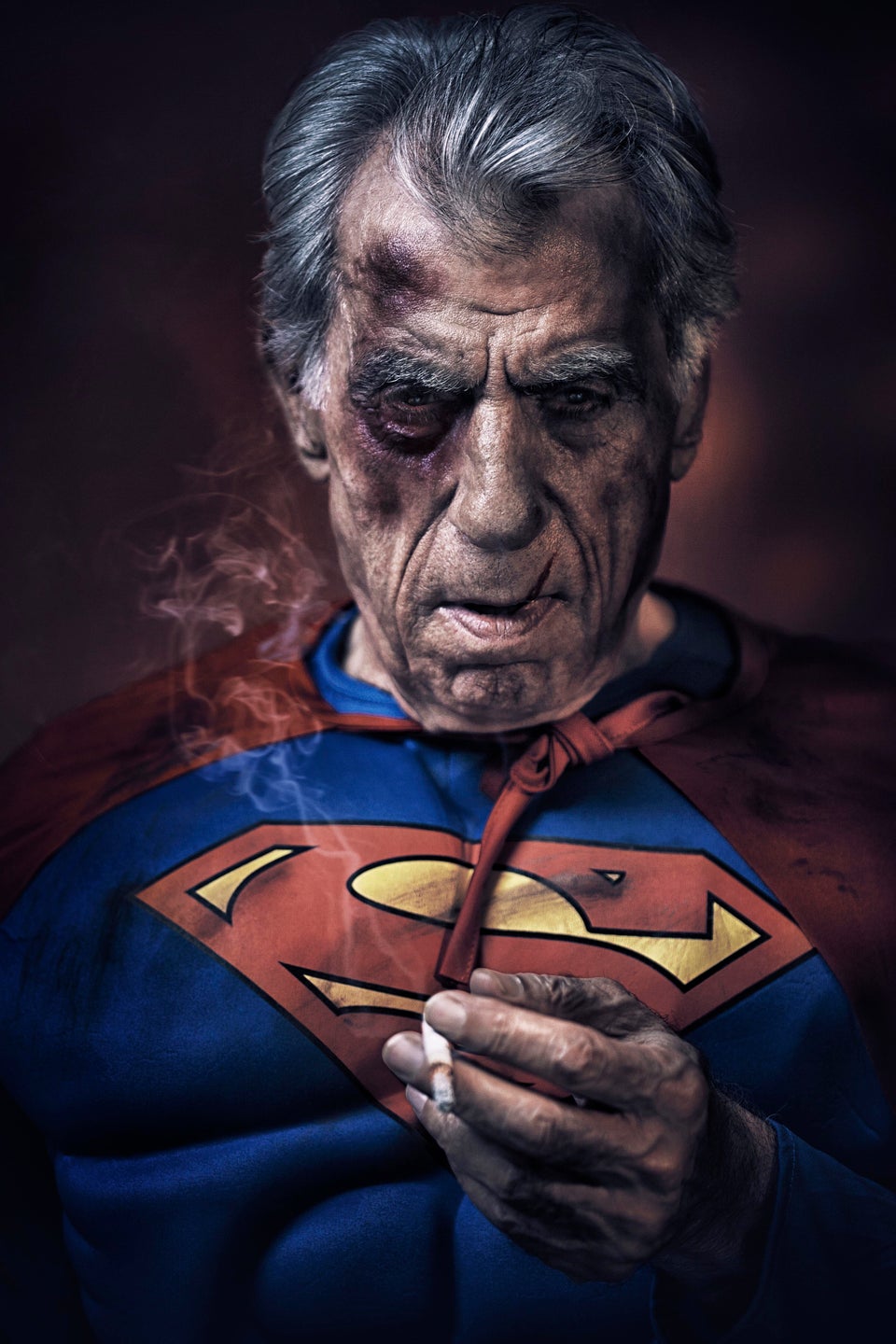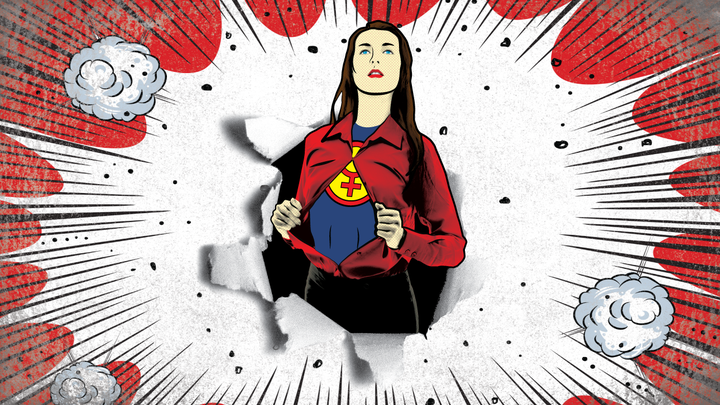
Source: Vocativ
In 1941, the world was introduced to Wonder Woman, a warrior princess clad in a mini skirt, strapless top and knee-high boots. Equipped with her famous Lasso of Truth and some weaponized jewelry, Diana of Themyscira was the first widely recognized superheroine -- a much-needed addition to the hypermasculine realm of comic fiction. But, compared to the men of superherodom, she wore decidedly less clothing and decidedly more bondage-inspired accessories.
Fast forward nearly 75 years, and a lot has changed in terms of women warriors. In 2013, we met an all-female X-Men crew, along with an impressive Muslim-American Ms. Marvel named Kamala Khan. In 2014, a female Thor took the comic realm by storm, followed by a new and improved Batgirl costume. In 2015, we heard whispers of an all-female Avengers-esque team, shortly before Marvel published Silk, the story of an Asian-American teenage superheroine named Cindy Moon. Note: none of these characters wear tiaras.
According to research conducted by Vocativ's Tracy Clark-Flory and Tal Reznik, the Marvel and DC universes have come a long way on the path to gender parity in comics since Wonder Woman's first appearance decades ago. "Female superheroes are breaking comics’ glass ceiling," their new article asserts.
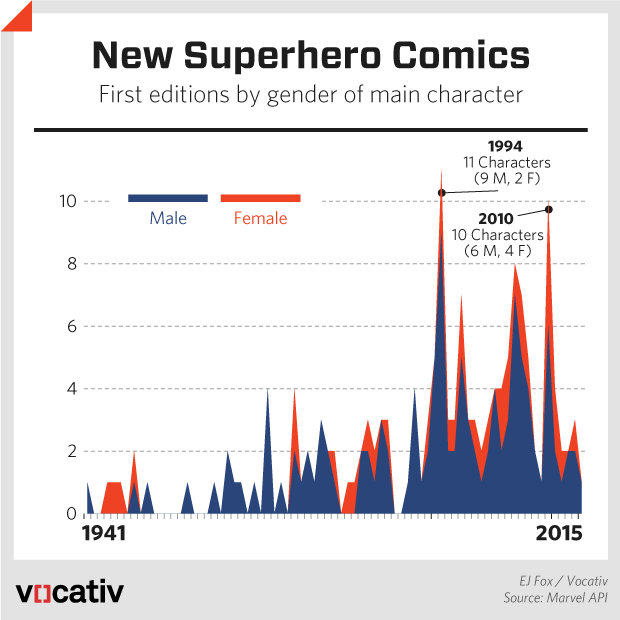
Source: Vocativ
Clark-Flory and Reznik explore how, in the past, comic generators like Marvel and DC were hesitant to give ladies their own comics, largely due to the fact that comic book readers were believed to have been primarily men and boys. (Recent polls have, of course, proved this assumption to be less than illuminating.) As a result, they estimate that the comic world encompasses three times as many male characters with their own series as women -- 118 versus 38. Comic historian Tim Hanley similarly asserts that men outnumber women on Marvel and DC covers by a factor of three.
However, since 2000 alone, Marvel has added 18 women-led titles. And these women, like Ms. Marvel, tend to don costumes far removed from Wonder Woman's 1960s bodysuit. A roundup of data from 1941 to 2015 shows that in the year 1994, nine male characters entered the canon, compared with only two female. Sixteen years later, in 2010, the spread was six male characters to four female characters, a small but significant jump. Women characters are starting to get their own series faster than the men, too: According to Vocativ, it takes a female superheroine about 15 years to get her own title, while it takes male characters 18.
Audiences seem to be responding to the shift. For example, the female Thor has outsold its male counterpart by 30 percent.
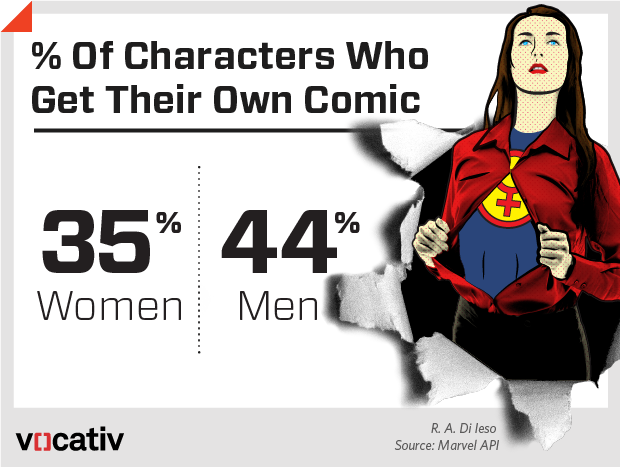
*For the sake of comparison, only characters from Marvel’s “main” universe, Earth-616, were analyzed, and they were only scored as having received their own books if they didn’t share it with another character, if their name was featured in the title and if it ran for at least two issues. The analysis relied on Marvel’s internal data, which may be incomplete in places.
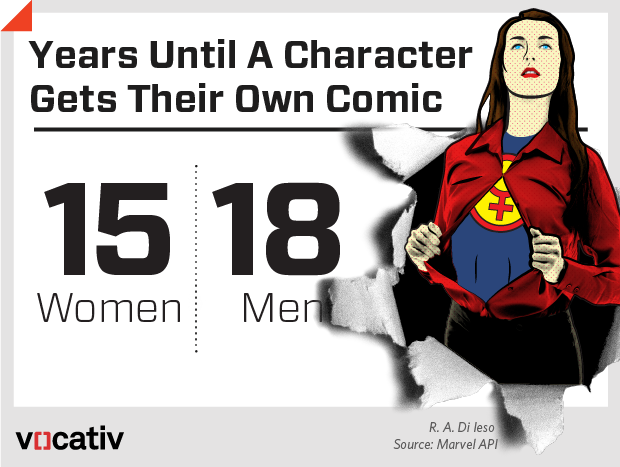
Source: Vocativ
Perhaps most important, Vocativ's writers point out that before the likes of lady Thor and Cindy Moon, the most popular superheroes tended to be white men, while the creators tended to be ... white men. DC and Marvel, Hanley asserts in his own research, are slowly hiring more women capable of writing relatable story lines centered on female superheroines. And this is important.
FiveThirtyEight's Walt Hickey crunched his own numbers last year, concluding that the new characters being introduced into Marvel and DC series still don't reflect reality -- women make up half the population, he asserts, and comic books hardly adhere to this fact. Yet, Hickey agreed that an attitude shift was occurring on the side of creators. Writers are acknowledging the existence of misogyny in the industry, and have made strides toward including women and LGBT characters into their series.
Ultimately, the key to changing the way underrepresented demographics are portrayed on the pages of comic books likely lies in the efforts to get more women and minorities writing, illustrating and producing comic characters. Maybe then we'll see female characters with realistic costumes and realistic body types.

